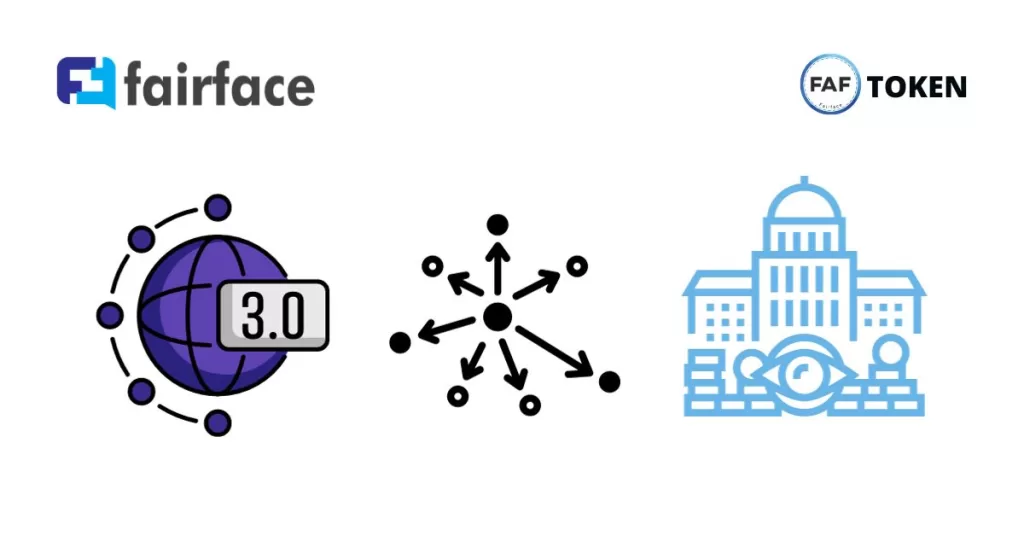The emergence of Web3 has brought with it a revolutionary concept: decentralized governance. Unlike traditional systems, where power is concentrated in central authorities, Web3 envisions a more democratic and distributed approach. In this blog post, we’ll explore the intricacies of decentralized governance and the delicate balance it must strike between transparency and control.
Web3 is the next generation of the internet, which is built on blockchain technology. Web3 is designed to be more decentralized and transparent than the current internet. This means that users have more control over their data and their online experiences.
One of the key challenges of decentralized governance in Web3 is striking a balance between transparency and control. On the one hand, it is important for decentralized organizations to be transparent about their decision-making processes. This helps to build trust and legitimacy within the community. On the other hand, it is also important for decentralized organizations to have some degree of control over their operations. This is necessary to prevent malicious actors from disrupting the organization or stealing its assets.
There are a number of different ways to strike a balance between transparency and control in decentralized governance. One approach is to use a system of voting and delegation. This allows community members to participate in the decision-making process, but it also allows the organization to make decisions quickly and efficiently.
Another approach is to use a system of reputation and rewards. This system incentivizes community members to behave in a cooperative manner and to contribute to the organization’s success.
It is important to note that there is no one-size-fits-all solution for decentralized governance. The best approach will vary depending on the specific needs of the organization. However, there are a number of principles that can be followed to create a decentralized governance system that is both transparent and effective.
Here are some tips for navigating decentralized governance in Web3:
- Be informed: It is important to be informed about the decentralized organizations that you are participating in. This includes understanding the organization’s goals, values, and decision-making processes.
- Be involved: One of the best ways to ensure that decentralized organizations are transparent and accountable is to be involved in the decision-making process. This can be done by participating in votes, forums, and other community activities.
- Be patient: Decentralized governance can be slow and complex. It is important to be patient and to understand that it may take time for decisions to be made and implemented.
Decentralized governance is a new and evolving field. There are a number of challenges that need to be addressed before decentralized governance can be widely adopted. However, decentralized governance has the potential to revolutionize the way that organizations are managed and governed.
Here are some examples of decentralized governance in Web3:
- Decentralized autonomous organizations (DAOs): DAOs are organizations that are governed by a set of rules that are encoded in a smart contract. DAOs are typically managed by a group of community members who have a vested interest in the organization’s success.
- Decentralized finance (DeFi): DeFi is a financial system that is built on blockchain technology. DeFi allows users to access financial services without the need for intermediaries, such as banks. DeFi protocols are typically governed by a set of rules that are encoded in a smart contract.
- Non-fungible tokens (NFTs): NFTs are unique digital assets that are stored on a blockchain. NFTs can be used to represent ownership of digital assets, such as art, music, and collectibles. NFT communities often use decentralized governance models to make decisions about the future of the project.
The Promise of Decentralized Governance
Decentralized governance is the cornerstone of Web3, fostering openness, inclusivity, and resilience. It envisions a future where communities, rather than central authorities, make decisions. This shift has several advantages:
- Transparency: Decisions in decentralized networks are made openly and recorded on a blockchain, ensuring transparency. Anyone can verify the process and outcomes.
- Inclusivity: Participation is open to anyone, empowering a diverse range of voices. No single entity holds a monopoly on decision-making.
- Censorship Resistance: Decentralized governance resists censorship, making it immune to the control or influence of a single entity or government.
- Trustless Collaboration: Trust is established through code and cryptographic mechanisms, reducing the need to rely on intermediaries.
The Challenge: Striking the Balance
However, decentralized governance faces the challenge of striking a balance between transparency and control:
- Transparency Overload: Too much transparency can be overwhelming and might expose sensitive information. Striking a balance between openness and privacy is crucial.
- Decision Efficiency: Decentralized decision-making processes can be slow, making it challenging to respond to rapidly changing conditions. Finding mechanisms for efficient decision-making is essential.
- Security and Trust: Decentralized networks require consensus to make decisions. Maintaining security and trust in a trustless system is a delicate balancing act.
- Community Disagreements: Diverse voices can lead to disagreements and conflicts. Establishing mechanisms for conflict resolution is vital.
The Way Forward: Hybrid Models
Balancing transparency and control in decentralized governance may require hybrid models that incorporate both on-chain and off-chain decision-making. These models can adapt to various situations and needs, finding the right equilibrium.
Conclusion
Web3’s decentralized governance presents a transformative vision of a more open, inclusive, and censorship-resistant future. However, achieving the right balance between transparency and control is essential for the long-term success of decentralized networks. As the Web3 ecosystem evolves, it will continually fine-tune these governance models, harnessing the power of the crowd while ensuring decision-making remains efficient, secure, and trustworthy.

